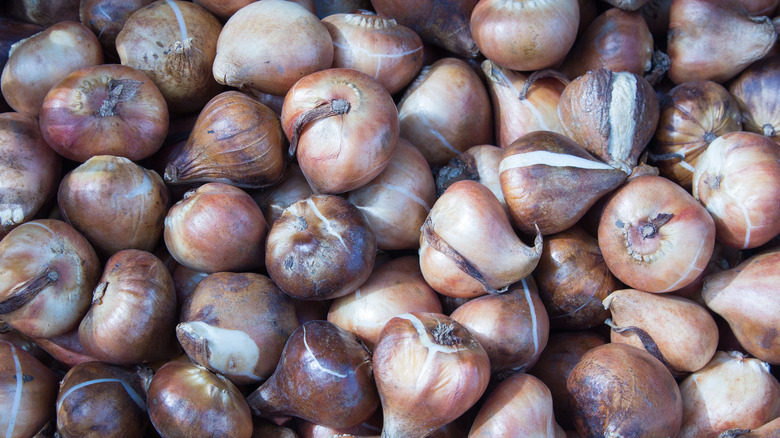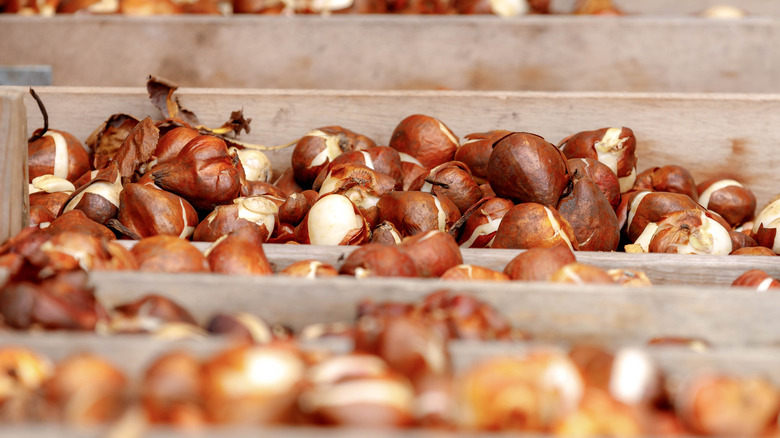Tulip Bulb Fries Represent Both Famine And Excess
When we think of war, what comes to mind are the horrible manifestations of violence and atrocity, like bombed-out cities, mass graves, and wounded soldiers. This is front and center during times of strife, and rightly so. However, we should not forsake the reality of daily life for those living through war. A lack of food often plays a significant role in the day-to-day struggle of those in the throes of armed conflict. This fact is all the more palpable as the war in Ukraine continues.
Yet, there are always glimmers of hope, even in times of seemingly impenetrable darkness. For instance, during the Nazi occupation of the Netherlands during WWII, the resistant Dutch government called for a railroad strike to form a blockage that made it nearly impossible for crucial supplies to reach the Nazis. Hitler's response was to cut off food shipments to Dutch ports, resulting in what is known as the hunger winter (via Eat History). Facing these food shortages, the Dutch people began to cook with something they had in abundance for centuries, tulips.
Tulip bulbs, from famine to luxury
Though their decision to eat tulip bulbs wasn't an easy one. According to Atlas Obscura, during the tulip mania of the 1630s, rare bulbs were traded on the Dutch Stock Exchange like precious commodities. But all of that changed during the hunger winter of 1944. Needing to be resourceful, everyday Dutch folk began to figure out ways to make the tulip crop edible, with some of the innovations being a tulip bulb soup and fritters where the bulbs were served as a substitute for potatoes.
This legacy of resilience through tulip bulb consumption lives on in modern Dutch cooking, though now the bulbs are considered a luxury. Chef Emile van der Staak of the Michelin-Star winning restaurant De Nieuwe Winkel says that a good batch of tulip bulbs can cost more than caviar, and he uses them to make a rendition of the old wartime tulip fritters. A version of patatje oorlog (war fries), van der Staak's version replaces potatoes with tulip bulbs but still serves them with the traditional mayonnaise, peanut sauce, and raw onions, per Atlas Obscura. So while tulip bulbs may have been the stuff of wartime necessity, today they are a luxuriant treat that connects us to a less harmonious past.

